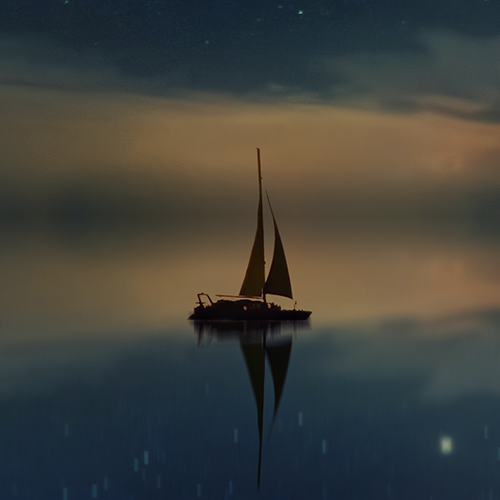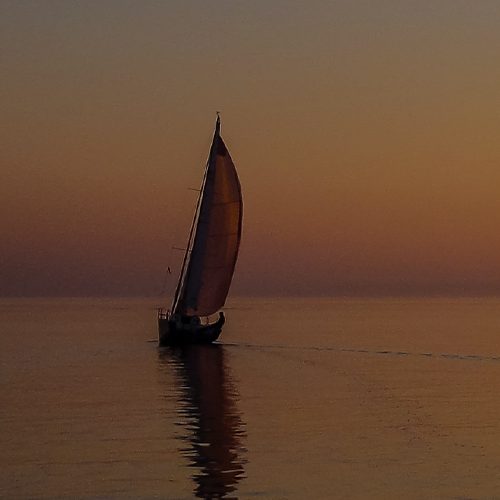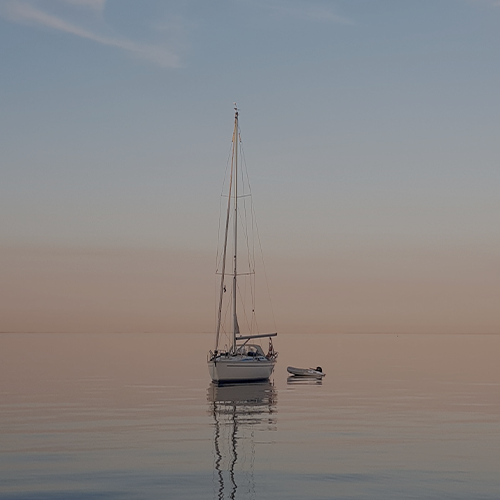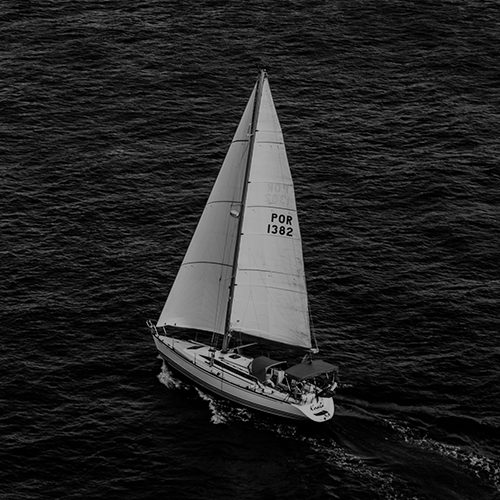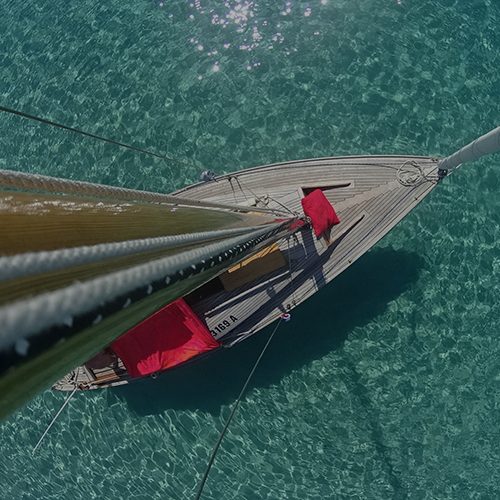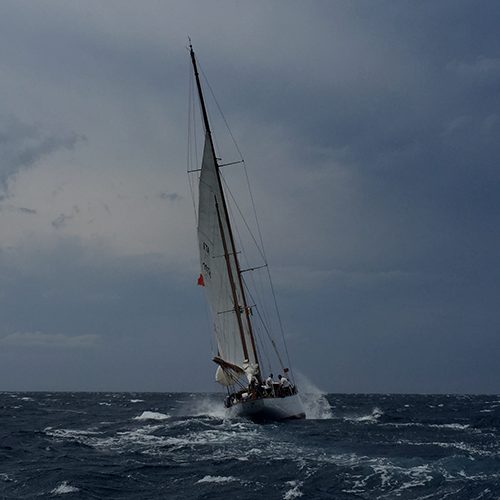In the early hours of Sunday, April 6, quick thinking and cool heads aboard Magellan averted what could have been a race-ending rig failure, just off Ambitle Island in Papua New Guinea.
The drama unfolded when the crew discovered the D1 ball joint had completely sheared off from the spreader, an essential rigging component that supports lateral mast stability. But instead of disaster, Magellan is back racing, thanks to a fast, smart response and a clever jury-rig fix of this father-and-daughter duo team.
“We’re amazed the mast didn’t fail,” said co-skipper Richard Grant. “There was a bit of pressure on, and when the tee ball that connects the D1 to the spreader shattered, it sounded like a rifle going off.”
There’s always a positive side upon reflection Richard added, “I’m glad we were sailing in the beauty of night. I hate to think of the sideways bend without the D1” as Richard and Megan quickly tacked and dropped sail to prevent further damage.
After inspecting the rig and confirming no additional cracks or fractures, Richard and his daughter Megan got to work crafting an inventive solution using Dyneema and a bit of resourceful thinking.
“Dad worked his magic,” Megan explained. “He made a strop from Dyneema, covered it with a rubber hose to prevent chafe, then figure-eight looped it around the spreaders. He then joined the two ends to a low friction ring, through which the spectra comes through. The spectra is attached to the D1 chain plate, then goes up through the ring and down to a pulley on the side stay chain plate and then attaches to the existing tensioning tackle system for the Solent stay” tensioning system.
The fix meant they had to sacrifice use of their Solent, but as Megan joked, “We can’t use the Solent anymore, but we can use our mast, which is definitely the more preferable option of the two!”
Both Richard and Megan Grant praised the swift support from the Ocean Racing Club of Victoria and the On Water Management team who watch over them 24/7, who responded to their alert within a minute, at 1:42am local time. Back in Melbourne, the race team quickly activated support protocols, alerting Papua New Guinea Search and Rescue authorities, researching local anchorages and facilities on Ambitle Island, and had competitor Blue Moon II on VHF standby and ‘marking time’ some 17nm away as they On Water Manager team prepared for all contingencies.
Paying tribute to those who were on call to assist Megan added “Thanks everyone for helping us out over the last 12 hours. Much said. “We’re proud to be back in the race, and massive credit to Dad for the jury rig.”
Enjoy their short video that demonstrates the jury-rig fix https://youtube.com/shorts/OltTlVrQ5io
Melbourne Osaka Media
Follow the fleet as they race towards Osaka via the race tracker https://race.bluewatertracks.com/2025-melbourne-osaka-cup-double-handed-race
Learn more about the race and competitors via the Melbourne Osaka Cup website https://melbourneosakacup.com/en/home/
Find us on Facebook: https://www.facebook.com/Osakacup2018/
About the Melbourne Osaka Cup:
Melbourne Osaka Double-Handed Yacht Race: The World’s Longest South-to-North Sailing Event, is about to kick off, attracting both international and local sailing talent.
Competitors sail non-stop and unassisted on their own boats with just two people onboard, navigating four weather systems over 32 to 35 days.
This event provides a unique opportunity for sailors, many of whom are Corinthian (non-professional and self-funded), to embark on the challenge of a lifetime. While major shorthanded races like the Vendée Globe and Transat Jacques Vabre feature professional teams, large shore crews, and significant budgets, the Melbourne Osaka Race stands apart by offering accessibility to sailors who do not rely on extensive support teams.
Interested in seeing more Offshore News?





















